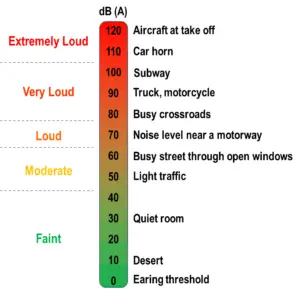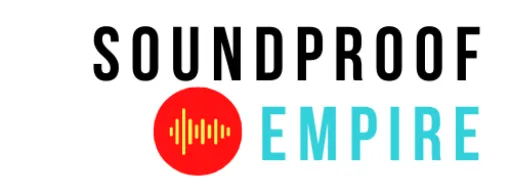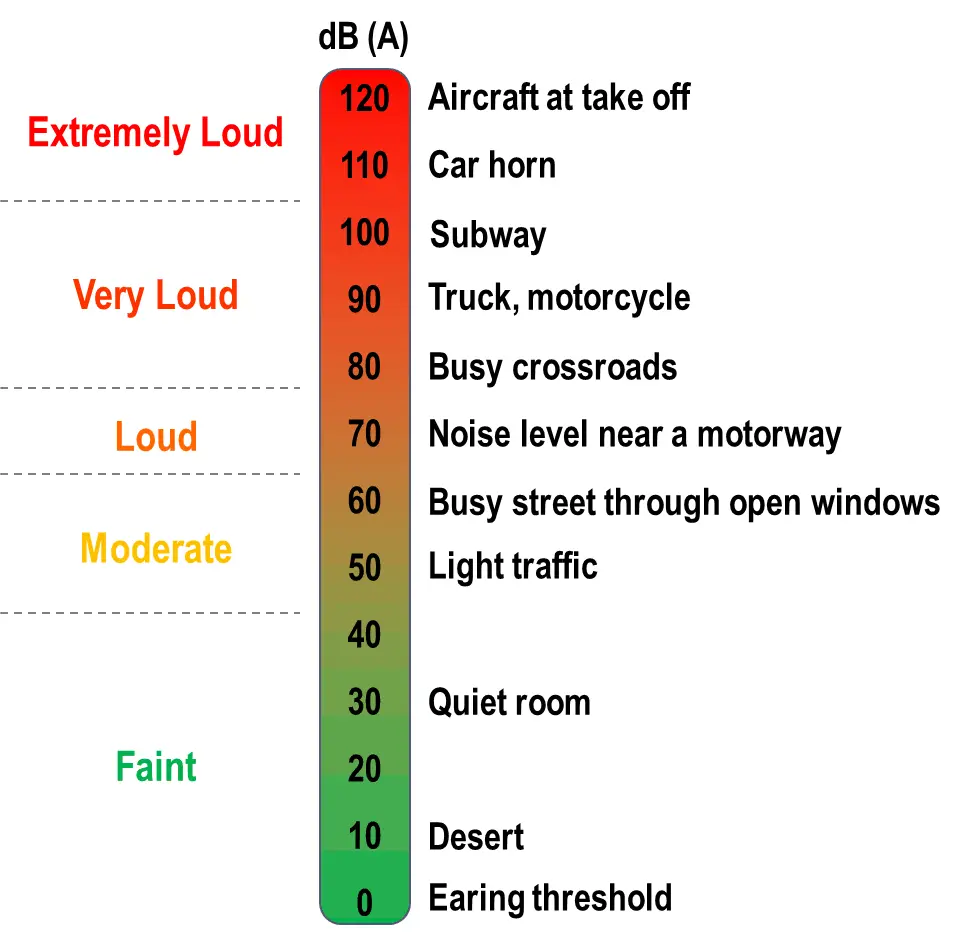Damage to hearing can happen to anyone if you are exposed to a dangerous amount of noise. But it will depend on the individual sensitivity to the noise. Everybody is different. Some people are more sensitive noise than others. With this noise level chart in dBA, you will be able to understand how much sound level some equipment and appliance have when in operation.

This will help you to take adequate steps to protect yourself from excessive noise levels to prevent hearing damage.
The human ear is an amazing hearing device. It has a clever in-built mechanism that reduces its own sensitivity as sound levels rise and it can also handle a great number of sound power levels. It can hear the sound of a pin dropping close-by as well as the roar of a jet engine far away.
Before we get into the sound level chart, let’s look at what noise is.
What is Noise?
Noise is an unwanted sound that your brain react unpleasantly to upon hearing. Noise is usually loud or disruptive to hear. The mediums through which noise or sound travel through are air and structural.
Airborne noise is often a form of noise that travels through the air. The sound waves travel in the open space with the flow of air. Some examples of airborne noise are people talking, television noise, conversations, etc.
Structural or impact noise is a form of noise that is created when one object impacts another object and vibrations of the molecules of objects impacted travel through the objects’ surface creating unwanted sounds as it travels. Examples include; washing machine or dishwasher in using vibrating.
Noise and sound are indistinguishable. The difference arises when the brain receives and perceives a sound.
What is the Decibel(dB) Scale?
The decibel (dB) scale is a relative unit of measurement corresponding to one-tenth of a bel. It is usually been used to express the ratio of one value of power or field quantity to another on a logarithmic scale.
Noise levels are usually measured using a sound level meter and the intensity of the sound is measured in the decibel units(dB).
The sound meter uses a display with decibel range and resolution to approximate to the ears’ dynamic range.
Because it is difficult to keep an eye on the different range o noise sources to be measured in a work environment, they are often expressed in a manageable way using the logarithmic scale using 10 as the base rather than a linear one. This scale is called the decibel scale.
For example, on the decibel scale, the quietest audible sound is 0 dB. 10 dB is considered to be 10times more powerful. A sound 100 times more powerful than 0 dB (near total silence) is 20 dB. And the list goes on.
Noise and Sound Level Chart in dBA
This noise level chart shows examples of sounds in dBA level ranging from 0 dB to 194 dB.
[ninja_tables id=”1531″]What are Safe Exposure Limits?
Noise is always considered as unwanted sound. Most people will suffer some hearing damage if they are repeatedly been exposed to noise levels above 85 dBA or even an acoustic shock at levels of over 137 dBA.
80dBA is the Lower Exposure Action Value in most Health and Safety legislation. After prolonged exposure to decibel levels above 80 dB(A) people can start to suffer from permanent hearing loss. Hearing gets damaged because high noise exposure over a period of time can damage the delicate hair-like sensory cells in the ear.
To measure decibel levels for the protection of peoples’ hearing an integrating sound level meter is required.
Preventing Damage to Your Hearing
now at least we have identified the level of sound exposure that is dangerous to your health and hearing. You should always pay attention to warning signs such as if you have difficulty talking or hearing others talk over the sound, the sound makes our ears hurt, other sounds seem muffled after you have left the area of the loud sound and your ears are ringing after hearing the sound.
In these cases, you should wear hearing protection to prevent hearing loss or damage. The hearing protector can help prevent both moderate and loud sound from getting into your ears.
The hearing protectors are able to reduce the high levels of noise to manageable levels that won’t damage hearing by using passive or active noise protection devices.
Most cases of noise-induced hearing loss are caused by repeated exposure to moderate levels of noise over many years, not by a few cases of very loud noise. Wearing hearing protectors can help prevent damage from both moderate and loud noise.
- How to Chew Quietly While Eating-Effective Tips - April 14, 2023
- Why is My Clutch Pedal Squeaking – Causes & Fixes - April 14, 2023
- Propane Tank Making Hissing Noise (Solved) - February 25, 2023

